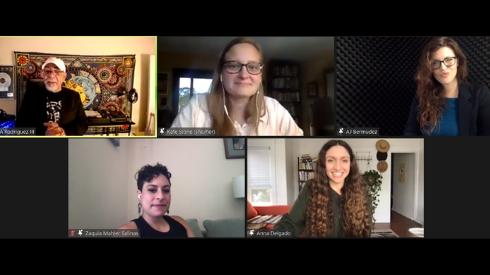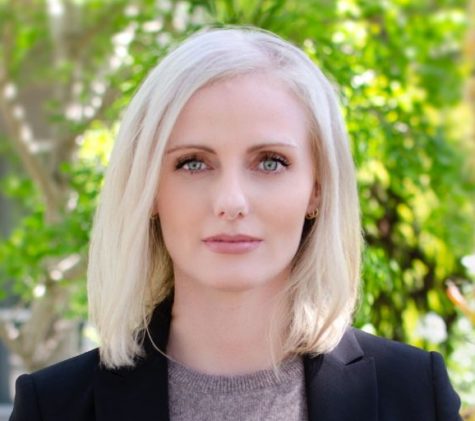Art, community and social change a part of Social Justice Conference
Four experts come together to show how the three are inextricably linked

Panel of talented artists discuss art as an act of social justice at the Social Justice Conference. Zoom screenshot
March 26, 2021
Art is often viewed as ancillary to the fight for social justice in our society, however, both the act of creating it and the act of sharing it, are tools for social justice.
Producing art provides the opportunity to create social change and community throughout the creative process, and the San Diego City College’s sixth annual Social Justice and Education Conference brought together a panel of talented artists that have experiences to prove it.
The panel, moderated by Jose “Pebo” Rodriguez of the City English department and Mike Espar from the City Music department, included writer and filmmaker, AJ Bermudez, City Assistant Professor of Fine Art, Anna Delgado, Dancer and Choreographer, Zaquia Mahler Salinas, and City Assistant Professor of Dramatic Arts, Kate Neff Stone.
A sentiment shared by all four panelists is that art, in any medium, can be an everlasting agent of change.
“There is something really beautiful about art, that it has never gone away,” Delgado said. “I don’t think we will ever stop dancing, we will never stop performing, we’ll never stop writing, we’ll never stop making physical artwork.”
According to the panel, it is not only the message that art sends, but also the make-up of the community who creates it, that gives it power and meaning.
“We are in the same room with people, we are laughing together, we are sitting together, we are crying together,” said Stone. “There is an embodied empathy when we listen to stories. We hear stories about people whose lives are different than ours and begin to understand a little bit about a life that is outside of ourselves. To expand our own borders, our own boundaries.”
If you are wondering how you can use art to create social change in your community right now, dancer and choreographer Zaquia Mahler Salinas emphasizes that one way is to simply show up and dance.
“Dance is an embodied art practice,” said Mahler Salinas. “Being in your body and engaging in an embodied practice is an act of hopefully creating some social change in a culture that doesn’t necessarily understand or appreciate embodiment and movement in the way that more diverse cultures do.”
Visit the City School of Arts to learn more about how you can get involved in the Arts at City.










